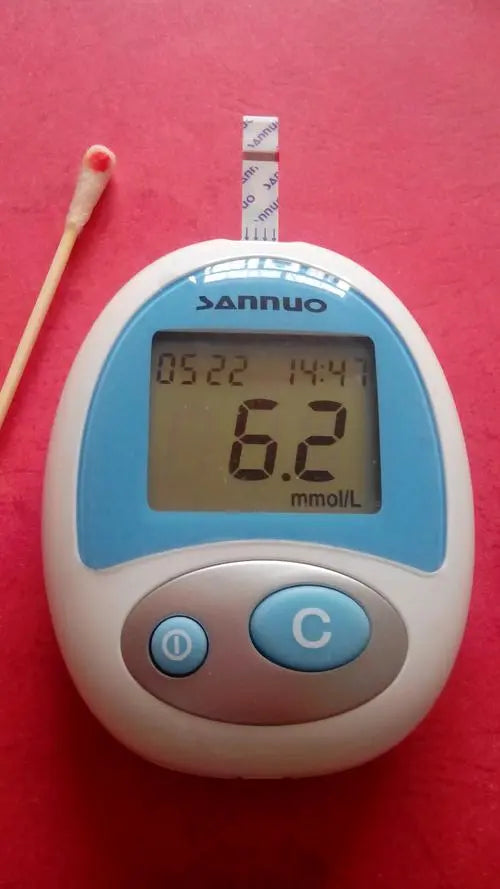Diabetic patients are most afraid of wounds on their bodies. One is that the wound is prone to infection; the other is that once the wound appears, it often lingers for a long time and is difficult to heal. Therefore, general doctors will instruct patients to wear socks, and it is best to wear suitable shoes, and to check their feet from time to time to see if there are any wounds.
Because wounds most commonly occur on the feet, the term "diabetic foot" was born. The occurrence of this disease does not necessarily have an obvious history of trauma. Many patients have wounds on their feet unknowingly, which is quite disturbing.
At present, in the treatment of Western medicine, oral anti-platelet aggregation drugs, such as aspirin, are supplemented by external sore clearing and dressing changes, and then depending on the presence or absence of infection, it is decided whether to add antibiotics. For rapidly spreading and uncontrollable wounds, amputation is necessary. Wound formation is most associated with peripheral neuropathy and vascular disease. The occurrence of peripheral neuropathy, in addition to hyperglycemia-induced metabolic abnormalities, is mainly caused by ischemia-induced neuronal dystrophy. It can be seen that tissue ischemia caused by vascular disease is actually the main factor of this disease.
Vascular disease caused by diabetes can be divided into two categories: the first type is large blood vessel disease, which is known as arteriosclerosis; the second type is small blood vessel disease, which is caused by the function of vascular endothelial cells. Deficiency prevents blood vessels from dilating normally to supply tissue. For the former, we can surgically bypass blood collection tubes and send blood to ischemic tissues. But for the latter, there is no effective treatment. Besides, clinically, these two kinds of vascular lesions almost occur together. So we can often see some patients, even after receiving vascular bypass surgery, diabetic foot still occurs.
Although traditional Chinese medicine does not have these microscopic observation records, it has accumulated valuable treatment experience through the treatment of symptoms. According to the pathogenesis of diabetic foot, it belongs to the category of blood stasis in traditional Chinese medicine. In terms of treatment, promoting blood circulation and removing blood stasis is the main method. In the current research on Chinese medicine, it can be found that Chinese medicine treats blood stasis through various aspects.
Some of these drugs have an anticoagulant effect similar to that of coumadin or aspirin. This includes the familiar Angelica, Salvia, Chuanqi and so on. In addition, some drugs, such as gardenia, can even restore the function of dysfunctional vascular endothelial cells, which is really exciting.
In addition, in some clinical experiment reports of the compound, it has a significant effect on the improvement of peripheral blood perfusion, the healing of diabetic foot wounds, and even the prevention of infection. These preliminary results make us deeply feel that traditional Chinese medicine seems to have great potential for the treatment of diabetic foot. However, the author must emphasize that no matter what treatment method is used, good blood sugar control is still the most basic step, especially for small vessel disease, which is even more important. Only when blood sugar is properly controlled can other treatments be effective. Patients must not hastily stop the hypoglycemic drugs they were using.
Comment
Traditional Chinese medicine has a good effect on the recovery of any wound, not just "diabetic foot". The blood sugar in the blood accumulates on the feet, thus destroying the blood vessels and blood circulation, and the wounds are not easy to heal. Have you ever seen Western medicine ask the patient to take a drop of blood from his hand to check how high the blood sugar is? No Western medicine has ever asked The patient takes a drop of blood from the toe to check the blood sugar, because the hypoglycemic drugs can only lower the blood sugar of the upper body, but cannot lower the blood sugar of the lower body.
For example, let’s say there is a person whose blood sugar is 300 after a blood test. After taking hypoglycemic drugs, the blood sugar drops to 100. It looks good on the surface, but in fact the missing 200 is still in the body. The blood sugar removed from the law of immortality will stay in the lower body. As a result, the blood sugar in a drop of blood obtained from the toe is 500. If it is added to the finger, it is 600. Divided by 2, it is 300, which means that the blood sugar has not changed at all.
Because too much blood sugar stays in the feet, after a long time, it will form "diabetic foot". It happened after a period of time after the patient started to use hypoglycemic drugs. Many diabetic patients control their blood sugar by themselves by dieting, so they don’t have this problem at all? That’s why the former President, Mr. Jing Guo, died because of his superstitious belief in Western medicine. of.

